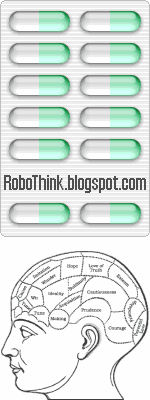 What happened to the children of psychologist J.B. Watson, his granddaughter Mariette Hartley, and Deborah, the second daughter of psychologist B.F. Skinner?
What happened to the children of psychologist J.B. Watson, his granddaughter Mariette Hartley, and Deborah, the second daughter of psychologist B.F. Skinner?
I think it was Eric Berne, the founder of Transactional Analysis psychotherapy, who coined the phrase "The long dark night of Behaviorism". The Behaviorist approach to experimental psychology was inaugurated by J.B. Watson in a manifesto entitled "Psychology as the behaviorist views it", published in
Psychological Review in 1913. He was the editor of the journal at the time and head of the psychology department at Johns Hopkins University. Behaviorism became the ruling paradigm in psychology for at least fifty years - until the early 1970s - and probably its best known exponent was B.F. Skinner. To sum up what Behaviorism stood for, I'll quote a passage from Aldous Huxley's "Brave New World Revisited" (published in 1958). Huxley uses the British spelling of 'behaviour':
For practical or theoretical reasons, dictators, Organization Men and certain scientists are anxious to reduce the maddening diversity of men's natures to some kind of manageable uniformity. In the first flush of his Behaviouristic fervour, J.B. Watson roundly declared that he could find "no support for hereditary patterns of behaviour, nor for special abilities (music, art, etc.) which are supposed to run in families." And even today we find a distinguished psychologist, Professor B.F. Skinner of Harvard, insisting that, "as scientific explanation becomes more and more comprehensive, the contribution which may be claimed by the individual himself appears to approach zero. Man's vaunted creative powers, his achievements in art, science and morals, his capacity to choose and our right to hold him responsible for the consequences of his choice - none of these is conspicuous in the new scientific self-portrait."
Huxley misquotes slightly. Skinner actually wrote "his
original accomplishments in art, science, and morals..." The statement can be found in "Cumulative Record" by B.F. Skinner (Reprint edition: Copley Publishing Group, 1999). In other words, the Behaviorists considered that human behavior was mostly shaped by environmental conditioning and that hereditary factors counted for very little. That was the ruling paradigm in academic psychology for fifty years until the pendulum swung in the other direction. Now, 'evolutionary' psychology and the search for 'genetic predispositions' have taken its place. It seems to be very hard for most psychiatrists and university psychologists to get it into their heads that both factors are fundamentally intertwined.
To most students of psychology B.F. Skinner's name is associated with conditioning experiments on rats and pigeons in 'Skinner boxes', and J.B. Watson's name with the induction of phobias into an infant child known as 'Little Albert' (see:
the Little Albert experiment at Wikipedia). What happened to Little Albert later in life is unknown.
J.B. Watson's children
Watson subjected his own children to a harsh upbringing regime - scheduled feeding and no physical affection. His first marriage to Mary Ickes produced a daughter, Mary (
a.k.a. Polly), and a son John. Polly made multiple suicide attempts later in life and 'Little John' became a rootless person who often sponged off his father. Little John was plagued by stomach trouble and intolerable headaches throughout his life. He died in his early 50s from bleeding ulcers.
After a scandalous affair with a graduate student young enough to be his daughter, Rosalie Rayner, Watson's wife Mary divorced him and he was fired from Johns Hopkins University. Soon after, he married Rosalie and they had two sons - Billy and Jimmy. In adulthood Billy rebelled against his father's behaviorism and established a successful career as a Freudian psychiatrist. Nevertheless, he too attempted suicide. His first attempt was stopped by younger brother Jimmy. He killed himself at his second attempt. Jimmy suffered chronic stomach problems for years (a legacy of scheduled feeding during infancy?), but managed to do well in life after intensive analysis. An
article about J.B. Watson on the website of Clayton State University refers to the suicide:
"Sadly, although B.F. Skinner got to brag that his "baby in a box" grew up healthy and happy, Watson's application of science to child-rearing lacks that testimonial validity: William, the older of his and Rosalie's two sons, committed suicide at age 40, just four years after John Watson's death."
In 1930, when the boys were still young, Rosalie Rayner Watson wrote an article for
Parents Magazine titled "I Am the Mother of a Behaviorist's Sons," in which she expressed the wish that her sons would grow up to appreciate poetry and the drama of life. She said: "In some respects I bow to the great wisdom in the science of behaviorism, and in others I am rebellious. ... I like being merry and gay and having the giggles. The behaviorists think giggling is a sign of maladjustment." She died five years later from pneumonia. There's an article about John B. Watson and Rosalie Rayner in
Johns Hopkins Magazine, published by the university where he was professor of psychology:
It's All in the Upbringing. John Broadus Watson became a recluse towards the end of his life. He burned all of his papers prior to his death in 1958.
Mariette Hartley - Breaking the Silence
That's not the end of the family saga. Watson's daughter Mary had a daughter in turn, Mary Loretta Hartley (
a.k.a. Marietta or Mariette), who later achieved success as the actress Mariette Hartley (
www.mariettehartley.com). She is probably best known for her TV commercials for Polaroid in which she played the role of James Garner's wife. However, the circumstances of her childhood were dire. Her rage-filled, silence-prone mother was a secret drinker who repeatedly tried to commit suicide, first one way and then another. Her father, a retired advertising executive, took his own life at the age of 67 after a long period of depression. Mariette was eating breakfast with her mother when they heard the gunshot. These circumstances led Mariette herself into alcoholism and thoughts of suicide until her career hit bottom. She managed to pull through and rebuild her life with help from a friend and mentor. Later on, she wrote a memoir of her experiences, "
Breaking the Silence" (Putnam Group, 1990). She has this to say about her grandfather's childrearing principles:
"Grandfather's theories infected my mother's life, my life, and the lives of millions. How do you break a legacy? How do you keep from passing a debilitating inheritance down, generation to generation, like a genetic flaw?"
J.B. Watson was the author of a bestselling child rearing manual: "The Psychological Care of Infant and Child." After her recovery, Marietta Hartley became honorary director of the American Foundation for Suicide Prevention, and a public speaker and campaigner. She has received humanitarian awards from numerous organizations including, in her home state of California, the California Family Studies Center, the L.A. County Psychological Association and the University of California Brain Imaging Center at Irvine.
Mariette Hartley scripted and performed a solo stage show based on her autobiography. In "
If You Get to Bethlehem, You've Gone Too Far," which premiered in January 2006, she portrayed the main characters who shaped her life.
There are
lecture notes about John Broadus Watson on the website of Sonoma State University in California which begin with extracts from Mariette Hartley's "Breaking the Silence".
John B. Watson's background
John B. Watson's childhood is documented in K.W. Buckley's biography of his life and work,
Mechanical Man. He was raised by a pious mother who hoped that he would become a Southern Baptist preacher. She chose the surname of the most famous Baptist minister of the period,
Broadus, as his middle name. In 1894, he enrolled at Furman University, which at the time was a Southern Baptist Academy and Theological Institute. However, a philosophy professor at Furman became his mentor and inspired his interest in psychology, still a branch of the philosophical tradition.
In his later career Watson became a champion of the 'scientific method' in psychology. Yet despite the trappings of science, it appears Watson's advice on child-rearing in "The Psychological Care of Infant and Child" was mostly a recapitulation of the
Southern Baptist attitude to children.
B.F. Skinner's daughters

Perhaps it is because of the atrocious consequences of J.B. Watson's child-rearing methods on his own children that an urban myth attached itself to the fate of B.F. Skinner's second daughter, Deborah. His first daughter, Julie, became an educational psychologist (see
www.juliesvargas.com). The myth that Deborah had committed suicide arose because of an invention Skinner used as an alternative to a conventional cot -- the 'babytender'. He called it the Air Crib, but it has also been referred to as the 'heir conditioner'. It was something like a large version of a hospital incubator with a plexiglass panel which could be pulled up to seal in the warmth. It provided his daughter, Deborah, with a place to sleep and remain comfortable through the severe Minnesota winters without having to be wrapped in numerous layers of clothing and blankets. Unfortunately, when Skinner wrote an article about the 'baby tender' for the
Ladies' Home Journal in 1945, the article was given the title "Baby in a Box." Many people jumped to the conclusion it was a variation of the 'Skinner box' he used for animal experiments. The truth is more benign. Deborah is a successful artist and painter. You can read her account of the story in this 2004
article in The Guardian newspaper. It is her response to Lauren Slater's book "Opening Skinner's Box: Great Psychological Experiments of the Twentieth Century."
You can see a large photo of a commercial version of Burrhus Frederic Skinner's "AirCrib" in the
Apparatus Collection at the University of Akron's
Archives of the History of American Psychology. Most of them were purchased for children of psychologists.
 What happened to the children of psychologist J.B. Watson, his granddaughter
What happened to the children of psychologist J.B. Watson, his granddaughter 